What is a spinal tumor?
A spinal tumor is a growth of abnormal cells in or around the spine. These tumors can form in different areas, including the spinal cord, the protective layers around it, or the bones of the spine.
A spinal tumor can affect movement, balance, and sensations like touch and pain since the spinal cord and nerves play an important role in these functions. When a tumor presses on the nerves, it may cause discomfort, weakness, numbness or tingling in the arms and legs. Some people may also experience trouble walking, loss of bladder or bowel control or persistent back pain that doesn’t improve with rest. Spinal tumors in the bones are often spread from elsewhere in the body. They can weaken the bones and cause them to fracture.
While spinal tumors can be serious, treatment options are available to help manage symptoms and improve quality of life. If you have ongoing back pain or other concerning symptoms, it's important to talk to a doctor.
Types of spinal tumors
Spinal tumors can form in different areas of the spine and may be noncancerous (benign) or cancerous (malignant). Some tumors start in the spine (called primary tumors), while others spread from cancer in another part of the body (known as metastatic tumors). Understanding the different types of spinal tumors can help identify symptoms and treatment options.
-
Tumors that start in the spine (primary spinal tumors)
Primary spinal tumors begin in the spine or spinal cord and are less common than metastatic tumors. They can grow at different rates and may or may not be cancerous.
-
Tumors inside the spinal cord (intramedullary tumors)
Intramedullary tumors grow within the spinal cord itself and make up about 5% of all spinal tumors. Intramedullary tumors are most commonly found in the neck area.
- Ependymomas: The most common spinal cord tumor, often slow-growing and usually non-cancerous.
- Astrocytomas: These can be either benign or cancerous and may cause nerve-related symptoms.
- Hemangioblastomas: Rare, typically noncancerous tumors that can lead to fluid buildup in the spinal cord.
-
Tumors around the spinal cord (intradural extramedullary tumors)
Intradural-extramedullary tumors develop within the dura mater, the protective membrane surrounding the spinal cord, but outside the spinal cord itself. These tumors are usually benign and account for about 40% of all spinal tumors.
- Meningiomas: Usually slow-growing and noncancerous, more common in women.
- Schwannomas and neurofibromas: These are typically benign tumors that form on nerve roots, but they can cause nerve damage if they grow too large.
- Hemangiomas: Tumors that develop in blood vessels within the spine and may cause pain or fractures.
-
Tumors in the spine’s bones (extradural tumors)
Extradural tumors are located outside the protective covering around the spinal cord, known as the dura mater. These tumors can damage the bones of the spinal column and may press on the spinal cord and nerve roots. Most extradural tumors are metastatic, meaning they have spread to the spine from cancer in another part of the body.
- Osteoid osteomas and osteoblastomas: Noncancerous bone tumors that may cause pain.
- Chordomas: Slow-growing, rare tumors that can become cancerous.
- Osteosarcomas and chondrosarcomas: More aggressive bone cancers that affect the spine.
-
Metastatic spinal tumors (cancer that spreads to the spine)
Metastatic spinal tumors are the most common type of spinal tumor. These tumors start as cancer in another part of the body and spread to the spine.
Common cancers that spread to the spine:
- Breast cancer
- Lung cancer
- Prostate cancer
- Kidney cancer
- Thyroid cancer
- Blood cancers, such as lymphoma and myeloma
Metastatic spinal tumors usually affect the bones of the spine and can cause severe pain, fractures or nerve problems. Treatment focuses on managing discomfort, maintaining function and slowing cancer progression.
Spine cancer symptoms
The symptoms of a spinal cord tumor vary based on its location, type and the person’s overall health. Tumors that spread from other parts of the body (metastatic tumors) tend to grow more quickly, while primary tumors typically develop slowly over weeks to years.
Tumors inside the spinal cord often cause symptoms across large areas of the body. Tumors outside the spinal cord may grow for a long time without causing noticeable nerve damage.
Common symptoms include:
- Abnormal sensations or numbness, especially in the legs, which may occur around the knee or ankle, sometimes with sharp pain radiating down the leg
- Back pain that worsens over time, typically in the middle or lower back. This pain is often severe, doesn’t improve with medication, and may worsen when lying down or during physical strain, like coughing or sneezing. It may also spread to the hips or legs
- Cold sensations in the legs, cool fingers or hands, or coolness in other areas of the body
- Fecal incontinence (loss of control over bowel movements)
- Urinary incontinence (inability to control urination)
- Muscle twitches, spasms or contractions (called fasciculations)
- Loss of muscle function or weakness, especially in the legs, which can make walking difficult and lead to falls
- Pain from metastatic tumors that doesn’t improve with rest, often worsens at night, and may be accompanied by symptoms of a serious illness such as weight loss, fever, chills, nausea or vomiting
When to see a doctor
People living with cancer who experience back pain without any obvious cause should see their oncologist immediately, as this could represent the spread of a tumor to the spine or potentially a fracture. For people without cancer, if you experience pain for any unknown reason, especially at night, you should seek an evaluation with your primary care physician (PCP).
If you are diagnosed with a spinal tumor or your PCP is concerned by the results, they will refer you to a spine surgeon. Many spine cancer symptoms, such as paralysis and loss of bladder or bowel function, need urgent medical attention. If you experience any of these, go to your local emergency room immediately.
What causes tumors in the spinal cord?
The exact cause of most spinal cord tumors is unknown. These tumors start when cells in or around the spinal cord grow abnormally. The spinal cord is a bundle of nerves that carries messages between the brain and the rest of the body, and it's protected by the bones of the spine.
A spinal cord tumor forms when cells in the spinal cord or nearby tissues experience changes in their DNA. DNA is like a set of instructions that tells cells how to grow, divide and die. In tumor cells, these instructions go wrong, causing cells to grow too quickly and not die when they should. This leads to the formation of a tumor that can press on nerves and cause problems.
In some cases, these changes turn cells into cancerous cells, which can invade and damage healthy tissue.
Spine cancer risk factors
Spinal cord tumors are more common in people with certain genetic conditions, including:
Neurofibromatosis type 1 (NF1)
A genetic condition that causes changes in skin color and growth of tumors in nerve tissue. These tumors can form in the brain, spinal cord and nerves.
Neurofibromatosis type 2 (NF2)
A genetic condition that often leads to multiple tumors in the brain and spine.
Von Hippel-Lindau disease
A rare condition that causes tumors in blood vessels, known as hemangioblastomas. These can develop in the brain, eyes and spinal cord, and the disease can also cause other tumors in the kidneys or adrenal glands.
How are spinal tumors diagnosed?
Primary spinal tumors often don't cause any symptoms, so they’re usually discovered by chance during imaging tests for other reasons. If you're experiencing back pain, it’s important to see your healthcare provider, especially if you have a history of cancer.
Your doctor will ask about your symptoms and medical history and do a neurological exam. They may also recommend tests, like imaging tests, to help confirm or rule out a tumor diagnosis.
-
Medical history and exam
Diagnosing a spinal tumor usually starts with a review of your medical history and a physical exam. Your doctor will ask about your symptoms, including when they started and if they’ve become worse. During the exam, they may check your spine, test your muscle strength, reflexes and balance, and look for other signs of a spinal tumor.
If the results of the exam are concerning, your doctor may refer you to a neurologist or a neurosurgeon. They will conduct a more thorough neurological exam and may recommend additional tests to gather more information.
-
Blood tests
Blood tests are often used to confirm a suspected diagnosis, especially when certain types of tumors release markers that can be detected in the bloodstream. For example, tumors like prostate cancer or multiple myeloma often produce specific proteins or substances that can be identified through blood tests.
These tests are typically ordered after your doctor reviews your medical history and performs a physical examination, helping to narrow down the possible causes of your symptoms. While blood tests alone cannot definitively diagnose a spinal tumor, they can provide important clues that guide further testing and help your doctor determine whether cancer or another condition is contributing to your symptoms. Blood tests may also be used to monitor treatment progress or detect the spread of cancer.
-
Imaging tests
To diagnose a spinal tumor, your doctor may recommend different imaging tests to get a clear picture of your spine and check for any problems. These tests can also help determine if cancer is involved.
Common tests for diagnosing spinal tumors include:
- X-ray: While an X-ray doesn’t directly show tumors, it can help your doctor rule out other causes of back pain, like fractures.
- Magnetic resonance imaging (MRI scan): An MRI creates detailed images of your spine, including the spinal cord and nerves. It’s one of the best tools for identifying spinal tumors.
- Computed tomography (CT) scan: A CT scan uses X-rays to provide detailed images of your spine and surrounding structures. It gives your doctor a closer look at the bones and tissues.
- Bone scan: This test involves injecting a small amount of a radioactive substance into your blood. The substance is absorbed by your bones and helps your doctor spot tumors in the spine.
- Positron emission tomography (PET) scan: A PET scan can help doctors tell the difference between noncancerous (benign) and cancerous (malignant) tumors by showing how the cells in your body are working.
- Myelogram: A myelogram is an X-ray that uses a special dye injected into the space around your spinal cord to give your doctor a better view of the spine and any potential problems, including tumors.
These tests provide your doctor with important information to confirm if a tumor is present, its size and location, and how to proceed with treatment.
-
Lumbar puncture (spinal tap)
A lumbar puncture, also known as a spinal tap, is a procedure used to collect cerebrospinal fluid (CSF) from the space around the spinal cord. This fluid surrounds and protects the brain and spinal cord and plays an important role in the nervous system.
During the procedure, a small needle is inserted into the lower back to remove a sample of this fluid. The CSF is then analyzed in a laboratory to look for signs of abnormalities, such as infection, bleeding or the presence of cancer cells.
While a lumbar puncture is not always used to diagnose spinal tumors directly, it can provide helpful information, especially if doctors suspect the tumor has spread to the spinal cord or brain.
-
Biopsy
If your doctor suspects spine cancer after seeing your imaging test results, they may order a biopsy to confirm a diagnosis. A biopsy is a procedure to remove tissue or cells from a tumor or mass. The sample is sent to a lab for examination.
To perform a spinal biopsy, your doctor inserts a needle into the tumor through the skin using X-ray imaging for guidance. A pathologist at the lab analyzes the sample to see if a tumor is cancerous or benign. If the sample is cancerous, the pathologist can determine what type of cancer you have, which helps your doctor make treatment decisions.
Treatment of spinal tumors
Your doctor and cancer care team will discuss your treatment options with you, explaining the risks and benefits of each one. Your current health, age, goals for treatment and possible side effects play a role in developing the right plan for you. It’s important to ask questions and be sure you understand all your options, so you feel confident in your care plan.
Watchful waiting
In some cases, benign spinal tumors may not cause noticeable symptoms or may only cause mild symptoms that don’t significantly affect daily life. When this happens, your doctor may decide to take a "watchful waiting" approach. This means they will closely monitor the tumor over time to see if it changes or grows. To do this, your doctor may recommend regular follow-up appointments and imaging tests, such as MRIs or CT scans, to track the tumor's size and any potential changes. This approach allows the doctor to assess whether the tumor is progressing or if additional treatment is needed. If symptoms worsen or new issues arise, your doctor may suggest further evaluation or treatment options. This monitoring approach is often used when the tumor is small, slow-growing or located in a way that it doesn’t pose an immediate risk to surrounding nerves or tissues. Regular check-ups are important to ensure the tumor is being managed effectively.Surgery
The goal of surgery for spinal tumors is to remove as much of the tumor as possible, or ideally, the entire tumor. Your healthcare team will carefully evaluate whether surgery is safe for you, considering the location of the tumor and the potential risks to your spinal cord and surrounding nerves. If the risk of lasting nerve damage is low, surgery may be recommended. In most cases, the surgeon will make an incision in your back or neck to access the spine. They may need to remove part of the bones in the spine to reach the tumor. The surgeon uses a high-powered microscope and specialized surgical tools to carefully remove the tumor from the spinal cord. However, not all spinal tumors can be completely removed. In these cases, the surgeon will remove as much of the tumor as possible. After surgery, additional treatments like radiation or chemotherapy may be recommended to target any remaining tumor cells.Radiation therapy
Radiation therapy uses high-energy X-rays or other forms of radiation to destroy cancer cells, stop them from growing or shrink a tumor before surgery. This treatment can be particularly effective for tumors that cannot be surgically removed or as an adjunct to surgery to target any remaining tumor cells.
- Stereotactic radiosurgery (SRS): SRS is a non-invasive form of radiation therapy used to treat spinal tumors that do not respond well to traditional radiation treatment. It delivers highly focused, precise radiation to the tumor while minimizing damage to surrounding healthy tissue. This treatment is ideal for tumors that are hard to reach or resistant to standard radiation.
There are several systems used for SRS, including: - Gamma Knife: A specialized system that uses multiple beams of focused radiation to treat small to medium-sized tumors with great precision.
- Edge radiosurgery: A system that allows for highly accurate radiation delivery, ideal for treating complex or difficult-to-reach tumors.
- CyberKnife: A robotic system that delivers precise radiation from many different angles to treat tumors in the spine and brain.
- Proton therapy: Proton therapy is a form of external beam radiation that uses energized protons to target and destroy tumor cells. The advantage of proton therapy is its accuracy—it delivers high doses of radiation directly to the tumor while minimizing exposure to surrounding healthy tissue. This makes it particularly useful for treating tumors near critical structures, like the spinal cord.
Chemotherapy
Chemotherapy uses powerful medications to kill cancer cells. It can shrink spinal tumors and treat cancer that has spread to other areas of the body, making it especially useful for treating widespread or metastatic cancer. Unlike surgery and radiation, which only target specific areas, chemotherapy can reach cancer cells throughout the body.
Chemotherapy drugs can be taken in pill form or injected into a vein. In some cases, the medication may be delivered directly into the cerebrospinal fluid (CSF) around the spinal cord and brain to more effectively target the tumor.
Chemotherapy is often used alongside other treatments like surgery or radiation therapy. Sometimes, it’s given before surgery to shrink the tumor and make it easier to remove. Your doctor will decide the best approach based on the type and stage of your spinal tumor.
Find specialized spinal tumor care near you
We have multiple locations across North and Central Texas to provide you with convenient access to expert care. Our specialized centers include oncology, neurology and spine care, all designed to meet the unique needs of patients with spinal tumors. Whether you're seeking diagnostic testing, treatment options or ongoing support, our dedicated healthcare teams are here to guide you every step of the way.

AccentCare - Fort Worth
3880 Hulen St , Fort Worth, TX, 76107

AccentCare Home Health of Brenham
526 W Main St , Brenham, TX, 77833

AccentCare Home Health of College Station
119 Medical Park Lane Ste C, Huntsville, TX, 77340

AccentCare Home Health of College Station
1605 Rock Prairie Rd Ste 206, College Station, TX, 77845

AccentCare Home Health Of Denton
225 W. Mulberry St. Ste A, Denton, TX, 76201

AccentCare Home Health Of Desoto
911 York Drive Ste 203, DeSoto, TX, 75115

AccentCare Home Health Of Fort Worth (Arlington)
700 Highlander Blvd Ste 205, Arlington, TX, 76015

AccentCare Home Health of Huntsville
122 Medical Park Lane B , Huntsville, TX, 77340

AccentCare Home Health of Marble Falls
1100 Mission Hills Dr Ste 100, Marble Falls, TX, 78654

AccentCare Home Health Of McKinney
6800 Weiskopf Ave Ste 100, McKinney, TX, 75070

AccentCare Home Health Of Taylor (Hutto)
567 Chris Kelley Blvd Ste 201, Hutto, TX, 78634

AccentCare Home Health Of Temple
3809 S General Bruce Dr Ste 105B, Temple, TX, 76502

AccentCare Home Health Of Waco
8300 Central Park Dr Ste A, Waco, TX, 76712

AdventHealth Central Texas
2201 S Clear Creek Rd , Killeen, TX, 76549

Andrews Women's Hospital at Baylor Scott & White - Fort Worth
1400 8th Ave , Fort Worth, TX, 76104

Baylor Scott & White - Hillcrest Infectious Disease Clinic
50 Hillcrest Medical Blvd MOB1, Ste 104, Waco, TX, 76712
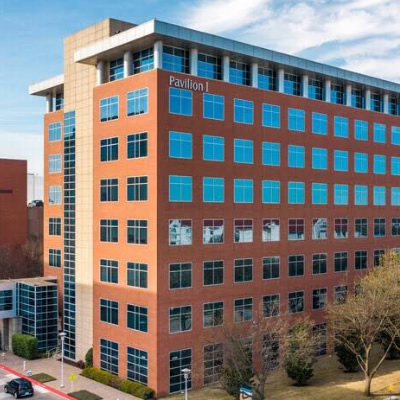
Baylor Scott & White - Plano Brain and Spine Center
4708 Alliance Blvd Pavilion I, Ste 810, Plano, TX, 75093

Baylor Scott & White - Texas Brain and Spine Institute
900 Scott and White Dr , College Station, TX, 77845
- Monday: 8:00 am - 5:00 pm
- Tuesday: 8:00 am - 5:00 pm
- Wednesday: 8:00 am - 5:00 pm
- Thursday: 8:00 am - 5:00 pm
- Friday: 8:00 am - 5:00 pm

Baylor Scott & White - Texas Brain and Spine Institute - Huntsville
122 Medical Park Ln Ste A, Huntsville, TX, 77340

Baylor Scott & White - The Brenham Clinic
600 N Park St , Brenham, TX, 77833
- Monday: 7:30 am - 5:00 pm
- Tuesday: 7:30 am - 5:00 pm
- Wednesday: 7:30 am - 5:00 pm
- Thursday: 7:30 am - 5:00 pm
- Friday: 7:30 am - 5:00 pm

Baylor Scott & White 65+ Clinic
4716 Alliance Blvd Ste 500, Plano, TX, 75093
- Monday: 8:00 am - 4:30 pm
- Tuesday: 8:00 am - 4:30 pm
- Wednesday: 8:00 am - 4:30 pm
- Thursday: 8:00 am - 4:30 pm
- Friday: 8:00 am - 4:30 pm
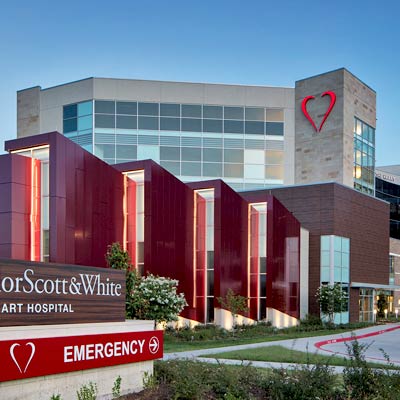
Baylor Scott & White Advanced Cardiac Imaging Specialists
1100 Allied Dr , Plano, TX, 75093

Baylor Scott & White Advanced Cardiovascular and Imaging Consultants
4708 Alliance Blvd Ste 450, Plano, TX, 75093
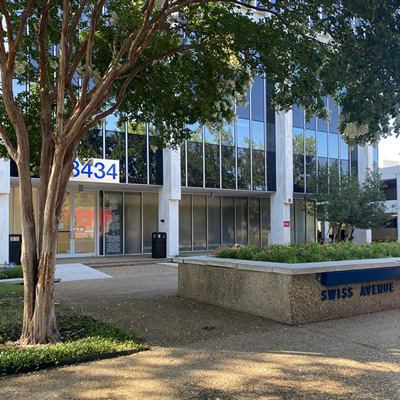
Baylor Scott & White Advanced Digestive Care
3434 Swiss Ave Ste 200, Dallas, TX, 75204
- Monday: 8:00 am - 5:00 pm
- Tuesday: 8:00 am - 5:00 pm
- Wednesday: 8:00 am - 5:00 pm
- Thursday: 8:00 am - 5:00 pm
- Friday: 8:00 am - 5:00 pm

Baylor Scott & White Advanced Heart and Lung Disease Center - Fort Worth
1420 8th Ave Ste 103, Fort Worth, TX, 76104

Baylor Scott & White Advanced Heart Care - Anna
450 N Standridge Blvd , Anna, TX, 75409

Baylor Scott & White Advanced Heart Care - Decatur
2401 S FM 51 Ste 200, Decatur, TX, 76234

Baylor Scott & White Advanced Heart Care - Denton
3333 Colorado Blvd , Denton, TX, 76210

Baylor Scott & White Advanced Heart Care - Idabel, OK
4 SE Avenue A , Idabel, OK, 74745

Baylor Scott & White Advanced Heart Care - Keller (Satellite)
3124 N Tarrant Pkwy Ste 204, Keller, TX, 76177

Baylor Scott & White Advanced Heart Care - McKinney (Satellite)
5236 W University Dr Ste 4450, McKinney, TX, 75071

Baylor Scott & White Advanced Heart Care - Mt Pleasant (Satellite)
1011 N Jefferson Ave , Mt Pleasant, TX, 75455

Baylor Scott & White Advanced Heart Care - Paris
875 S Collegiate Dr , Paris, TX, 75462

Baylor Scott & White Advanced Heart Care - Plano
4716 Dexter Dr Ste 100, Plano, TX, 75093

Baylor Scott & White Advanced Heart Care - Sherman Sycamore (Satellite)
203 E Sycamore St , Sherman, TX, 75090

Baylor Scott & White Advanced Heart Care - Sulphur Springs
601 Airport Rd Ste 110, Sulphur Springs, TX, 75482

Baylor Scott & White Advanced Heart Care – Sherman Highland (Satellite)
300 N Highland Ave , Sherman, TX, 75092

Baylor Scott & White Advanced Heart Failure Clinic - Irving
2001 N MacArthur Blvd Bldg 1, Ste 360, Irving, TX, 75061

Baylor Scott & White Advanced Heart Failure Clinic - Abilene
1219 E South 11th St Ste B2, Abilene, TX, 79602

Baylor Scott & White Advanced Heart Failure Clinic - Amarillo
1901 Medi Park Dr Ste 2051, Amarillo, TX, 79106

Baylor Scott & White Advanced Heart Failure Clinic - Dallas
3410 Worth St Ste 250, Dallas, TX, 75246
- Monday: 8:00 am - 4:30 pm
- Tuesday: 8:00 am - 4:30 pm
- Wednesday: 8:00 am - 4:30 pm
- Thursday: 8:00 am - 4:30 pm
- Friday: 8:00 am - 4:30 pm

Baylor Scott & White Advanced Heart Failure Clinic - Longview
906 Judson Rd , Longview, TX, 75601
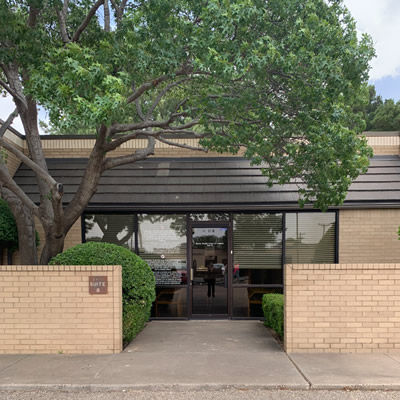
Baylor Scott & White Advanced Heart Failure Clinic - Lubbock
3711 22nd St Ste B, Lubbock, TX, 79410
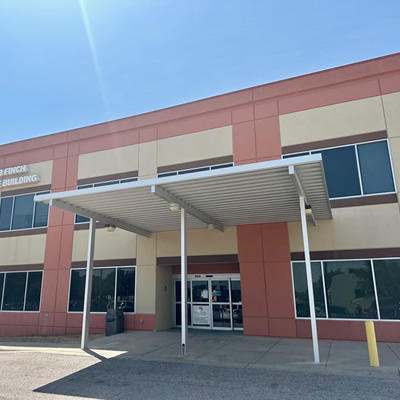
Baylor Scott & White Advanced Heart Failure Clinic - Midland/Odessa
420 E 6th St Ste 102, Odessa, TX, 79761
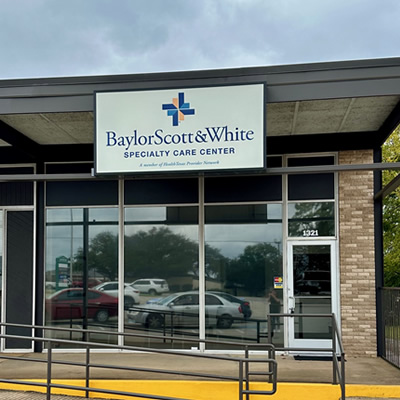
Baylor Scott & White Advanced Heart Failure Clinic - Tyler
1321 S Beckham Ave , Tyler, TX, 75701
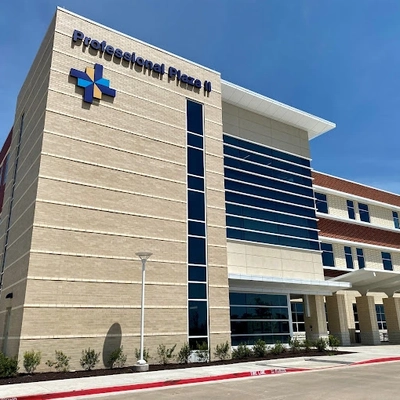
Baylor Scott & White Advanced Heart Failure Clinic - Waxahachie
2360 N Interstate 35E MOB 2, Ste 310, Waxahachie, TX, 75165

Baylor Scott & White Advanced Heart Failure Specialists - Fort Worth
1250 8th Ave Ste 200, Fort Worth, TX, 76104
- Monday: 8:00 am - 5:00 pm
- Tuesday: 8:00 am - 5:00 pm
- Wednesday: 8:00 am - 5:00 pm
- Thursday: 8:00 am - 5:00 pm
- Friday: 8:00 am - 5:00 pm

Baylor Scott & White Advanced Lung Disease Specialists - Dallas
3410 Worth St Ste 250, Dallas, TX, 75246
- Monday: 8:30 am - 5:00 pm
- Tuesday: 8:30 am - 5:00 pm
- Wednesday: 8:30 am - 5:00 pm
- Thursday: 8:30 am - 5:00 pm
- Friday: 8:30 am - 4:30 pm

Baylor Scott & White All Saints Medical Center - Fort Worth
1400 8th Ave , Fort Worth, TX, 76104
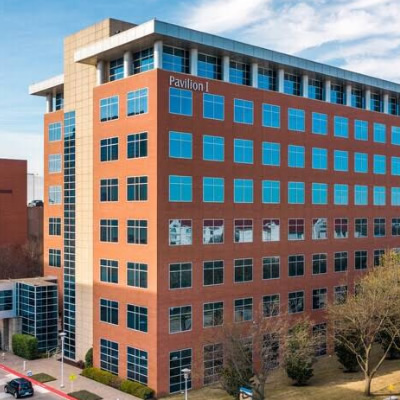
Baylor Scott & White Ambulatory Endoscopy Center
4708 Alliance Blvd Pavilion I, Ste 210, Plano, TX, 75093
- Monday: 7:00 am - 3:00 pm
- Tuesday: 7:00 am - 3:00 pm
- Wednesday: 7:00 am - 3:00 pm
- Thursday: 7:00 am - 3:00 pm
- Friday: 7:00 am - 3:00 pm
Frequently asked questions
-
Can an X-ray show a spinal tumor?
Yes, an X-ray can sometimes show a spinal tumor, but it is not the most effective test for diagnosing them. X-rays are more useful for ruling out other issues, like fractures or infections. To more accurately detect and assess spinal tumors, imaging tests like MRI and CT scans are preferred because they provide more detailed images of the spine and surrounding structures.
-
How common are spinal tumors?
Spinal tumors are rare, with only a small percentage of people developing them. Most spinal tumors are metastatic, meaning they spread from other parts of the body, like the lungs or breast. Primary spinal tumors, which start in the spine, are much less common.
-
Are all spinal tumors cancerous?
No, not all spinal tumors are cancerous. Some are benign (noncancerous), growing slowly without spreading, and may cause pain or weakness but aren’t life-threatening. Malignant (cancerous) tumors can grow quickly and spread to other parts of the body, requiring more aggressive treatment.
-
Are spinal tumors painful?
Yes, spinal tumors can cause pain, usually in the back. They may also lead to weakness, numbness, tingling and trouble walking. The pain and symptoms depend on where the tumor is and whether it’s pressing on nerves or the spinal cord. See a doctor if you experience these signs.
-
Can spinal tumors be removed?
Yes, some spinal tumors can be removed with surgery, but it depends on the tumor's location and type. If the tumor is in a difficult spot, complete removal may not be possible, but the surgeon will remove as much as safely possible and may recommend other treatments afterward.

